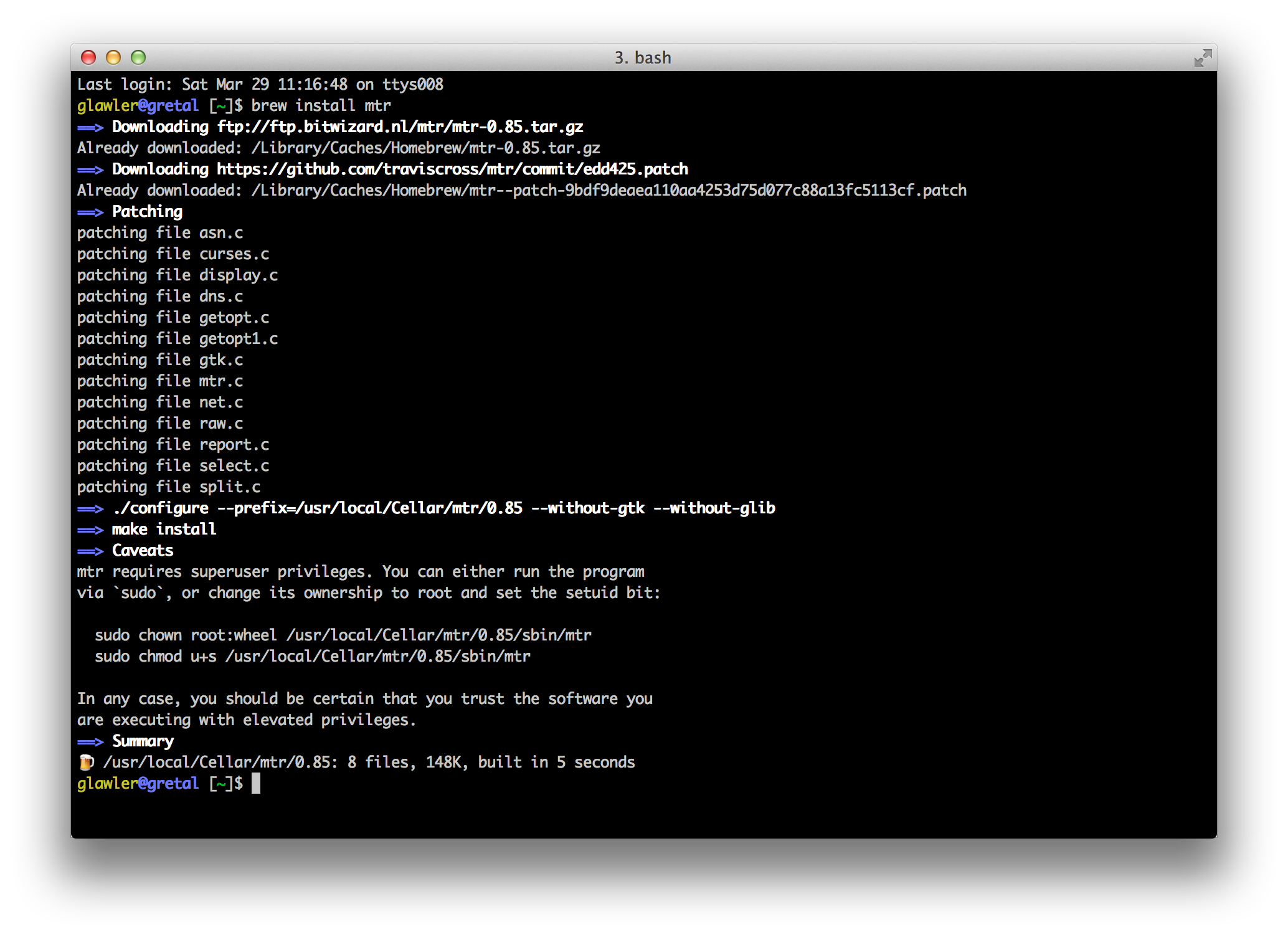

If you followed the steps correctly, we should get the following output: Welcome to the MySQL monitor. Type mysql -u root -p in your terminal and enter your password. We are now ready to connect to MySQL and run a few commands.

In MySQL, anyone can connect to the test database so it's a good idea to not worry about this.įinally, reload privilege tables so that all the changes will take effect. Remove test database and access to it? Yes.This ensures that someone cannot guess at the root password from the network."

Let's follow the installer recommendation: " Normally, root should only be allowed to connect from ‘localhost’. Since this is a local installation we have no need for anonymous users. Do we want to remove anonymous users? Yes.This is done by running the command mysql_secure_installation.ĭuring the secure installation process, some things to keep in mind are: Once we have MySQL installed and our service is up and running, our next task is to secure the installation. % brew services restart to restart MySQL.% brew services list to list all running services.Let's start the service so we can connect and secure our installation: brew services start useful commands to keep in mind as we go forward are: Our output should look like this: Name Status User Plist stopped Since MySQL runs as a service, we need to check if it is running: brew services list.
#Homebrew install install
To install this version enter: brew install Finally let's add MySQL to our zsh shell PATH by running: echo 'export > ~/.zshrc and re-start your terminal. However, we’re aiming to install version 5.7 so let's check which is the latest version by appending to the default package key: brew info The expected output should look something like this: stable 5.7.29 (bottled) Open source relational database management system Not installed We can check this by running brew info mysql. Re-start your terminal and check to see if everything was installed correctly: brew -v Install MySQLĪt the time of this writing, the default version of MySQL in Homebrew is 8.0. First, install xcode command line tools by running: xcode-select -installĪnd then paste the following command in your terminal: /usr/bin/ruby -e "$(curl -fsSL )" Installing Homebrew is probably the easiest step in the whole process.
#Homebrew install software
If you are a neat freak like me, when you uninstall software you don't want to worry about manually "cleaning up" all of the files that were leftover. Simply put, you can easily install and uninstall software. Homebrew won’t install files outside its prefix and you can place a Homebrew installation wherever you like. Homebrew installs packages to their own directory and then symlinks their files into /usr/local. According to its website, the two main benefits are:
#Homebrew install how to
MySQL is one of the most popular SQL databases available today so it's a good idea to have a local installation on your computer for testing and development purposes.Īlthough there are many ways to install MySQL, in this article we'll go over how to install it using Homebrew. As a beginning web developer, you'll likely have to work or interact with databases.


 0 kommentar(er)
0 kommentar(er)
